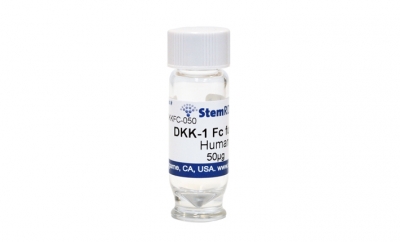| Source | Human 293 Cells | M.W. | CAS No. | ||
|---|---|---|---|---|---|
| Structural Info | |||||
| Formulation | Lyophilized in sterile filtered solution of PBS. | ||||
| Reconstitution | Before reconstitution, a brief spin is recommend to drive down any material dislodged from the bottom of the tube. The lyophilized protein should be reconstituted in sterile H2O to a desired concentration. | ||||
| Stability | The lyophilized protein is stable for at least one year if stored at -80 °C. Reconstituted protein is stable for at least four weeks at 4 °C, but should be stored in aliquots at -80 °C for longer term. Avoid repeated freeze and thaw. | ||||
| Purity | Greater than 90% as determined by SDS-PAGE analysis | ||||
| Biological Activity | The activity was determined by using a TCF reporter gene assay in cultured human cells. The IC50 ranges from 200 - 1000 ng/ml in the inhibition of 100 ng/mL WNT-3a activity. Activity in other assays | ||||
| Country of Origin | USA | ||||
DKK-1, Dickkopf-related protein-1, is a member of the DKK protein family which includes DKK-1 through DDK-4. DKK was originally identified as a head-forming molecule in Xenopus. Mechanistic studies showed that DKK-1 inhibits the Wnt /β-catenin
signaling pathway by forming inhibitory complexes with co-receptor LRP5/6. Inhibition of Wnt/β-catenin signaling is essential for posterior patterning and anterior development in vertebrates, supported by the discovery that DKK-1 knock-out mice lack head formation.
When DKK-1 is fused to the Fc fragment of human IgG1. This fusion renders stability of the protein in vitro and in vivo without significant loss of activity. StemRD expresses DKK-1 Fc fusion in human 293 cells and purifies it by protein A column.
